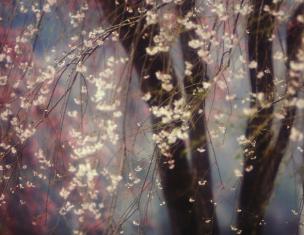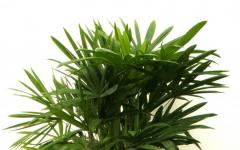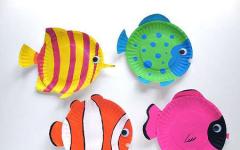When the question of masonry arises sharply floor covering in the outdoor area (gazebo, terrace, attic, veranda), a thousand doubts arise. What is better to make a floor in an open or closed area for recreation, not covered common system heating. That is, in places like this winter time year, the temperature can be quite low, and in summer it can correspond to sultry heat.
However, when it is possible to qualitatively evaluate the quality of tile slabs by hand, this is certainly the ideal way to follow as you can carefully determine the typical features that suit you in your choice. It starts with the size and shape of the brick tiles.
The nuances can be endless and they are all worthy of proper recognition: the choice depends on the taste and style you want to give away environment: Therefore, choosing light pink, red or yellow colors is not equal to reducing or increasing the quality of the cooked.
Terrace and veranda floors
The price, quality and aesthetics of terracotta depend on the type of terracotta. Terracotta tiles also have the same classification among the different options: first, second, third and fourth, depending on the finish and the number of imperfections on the surfaces. However, food preparation can be distinguished from other factors related to finishing and processing. You can distinguish between the following types of brewing.
What kind of flooring for a private house (verandas, terraces, attic or gazebos) to choose and what to make a beautiful, durable floor from, we understand below.
The quality of coatings for the territory adjacent to a private house
Given the fact that a terrace, veranda, gazebo or attic in the country are practical outdoor recreation areas (even if they are closed), it is worth choosing the most durable floor coverings for such objects. Floor materials must meet the following characteristics:
Cooked industrial; Made by hand or by hand; raw cooked; Cooked precious. Bakery self made has unique features and finishes that cannot be found in industrial slabs and are produced in series: perfection, in this case, does not match pregnancy. Small defects are synonymous with a hand-crafted product with traditional baking methods, so the value increases.
Raw cooking cannot be compared to precious cooking as the former remains natural, meaning it is not subjected to any protective treatment and has a more rustic feel; The second one, on the other hand, guarantees greater baking uniformity, resulting in a more complex and shiny look.
- Increased moisture resistance. Since even in a closed veranda, gazebo, terrace, attic, it can be very cold in winter. And as a result of temperature changes under direct sunlight, condensation may accumulate. Yes, and rain or snow in open recreation areas have an effect on materials.
- Frost resistance. That is, the flooring for the veranda, terrace, attic or gazebo should not be spread under the influence of too low temperatures.
- Strength . Taking into account the fact that the territory with such a floor covering will be used under conditions of increased loads and in the open air, the material should be as resistant as possible to increased mechanical stress.
- Anti-slip performance. This quality will avoid injury during operation in the cold season.
- Low wear. Floor covering for a veranda, attic, gazebo or terrace should perfectly maintain its appearance under the influence of the rays of the sun, rain, frost, wind and cold, as well as mechanical stress.
Based on the listed requirements for flooring for a terrace / veranda / attic / gazebo, the following materials will be excellent options:
Another "difference" must be made by examining the intended use. Also for outdoor terracotta is the classification between slabs suitable for flooring and those used for coverings. The former will obviously have strength and a more compact and heavy structure than the latter. Likewise, tiles to cover have certain features and finishes that are rarely found on floors.
Terrace ceramic surface
Known terracotta options for outdoor use, there is nothing that can do right choice for every need. When bad weather or winter sets in, we encounter some exterior floors that expand and break. The reason is the penetration of water into the screed of external sidewalks, balconies and terraces. An easy topic for job seekers, although sometimes it is not easy to find a solution or "buffer" solutions instead of making things worse.
- Terrace board (decking);
- Ceramic granite slabs;
- Stone concrete slabs;
- Board made of solid larch or teak.
Important: no material other than the floor coverings listed above can last more than 2-3 years in extreme conditions. And that means expensive repairs. Therefore, it is better to lay a reliable coating once than to do the same job repeatedly.
In my experience, in simple things we can find a solution. Exterior floor swelling and subsequent collapse occurs when water stagnates in the screed and cold winter temperatures turn to ice. The floor is hard and breaks because it cannot absorb the increase in volume.
The question remains, how to solve the problem of water that remains in the screed? The simplest answer comes from the ancient Romans. Lay gravel under any exterior floor whose function is to drain and allow water to pass through. Here is our simplified method. Apply the sealing element, which is a bituminous sheath, strictly inclined. Then apply a drainage sheath, we use this to protect the sheath and create drainage. This shell has a drain function with a very high drainage capacity.
Terrace board

To make the floors of a private house (namely, on the veranda / terrace / in the gazebo or attic) strong and durable, decking (terrace board) is widely used today. Floor panels are smooth or corrugated boards made from wood-polymer flour. That is, flour is used as part of such a floor covering. tree species combined with polymers. The latter play the role of a hardener and a plasticizing agent.
It is a polyethylene that protects the waterproofing and withstands very high loads, and the distribution of the load on the waterproofing is balanced over the entire surface. Finished with tiling. In this way, we create a drainage zone that allows water to flow and keep the floors. In conclusion, when repairing or designing floors, it is important to remember to create a drainage zone so that water can escape.
Ultra-modern self-leveling polymer floor
A few weeks before the arrival of summer, the best of them is the joy of the outside look. It doesn't get hot enough and the parties get longer, allowing us to enjoy the extra hours of light - so all that's left to do is keep the deck looking really spotless. It is not only about access to the advice of outdoor decorators, but above all to the professional study of the art of working stone, stone and stone. Why not just wash to restore the original beauty of the outdoor floors; It is also necessary to preserve its beauty and run often after the cold season, during which aloe and limestone stain surfaces, making them spilled and dirty.
A terrace board for a floor in a country house or in a private house (in open areas) is made by pressing. That is, under high pressure the mixture is squeezed out through a given shape, and as a result we get beautiful polymer floor boards.
The advantages of decking for outdoor recreation areas at home / cottages are:
- High material strength;
- Anti-slip properties;
- Resistance to temperature extremes, moisture and cold;
- Ease of installation and maintenance;
- Beautiful attractive appearance with imitation of natural wood;
- In addition, the decking board is absolutely inert to moisture, so it can be laid on piers, piers, in swimming areas, by pools and even on the porch of a house / cottage.
Ceramic tiles
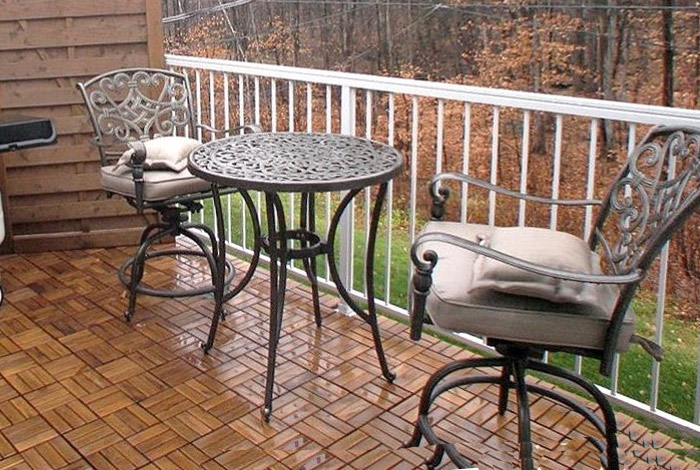
Floor coverings on the open veranda
It may seem complicated at first, but if you use the right cleaning assistants, your procedure will be simplified. Step one: find out about the problem and buy desired products depending on the type of floor and dirt you have to deal with. Based on ammonia, it combines an intense deodorizing action against deposited dirt, dust, smog, soot - and makes shiny tiles! If you have a black or slate floor to restore the intense and dark color of the material, after washing you can add a wax treatment with a livax slate designed for this precious element.
A similar material for the floor in the gazebo, on the terrace, on the veranda or in the attic is perfect if you decide to make the general style of the house using stone.
Important: when installing porcelain stoneware in the attic of a house or cottage, it is worth considering the weight of the tiles, since they can significantly increase the weight of the entire structure. The advantages of porcelain stoneware flooring are that the tiles are not subject to any changes under the influence of temperature changes and moisture. In addition, porcelain stoneware slabs are made in a wide variety of designs from marble slabs to natural stone or even wood. So create unique landscape design with a similar coverage will be easy.
Are you lucky to have a terracotta floor, ancient or modern? Once you treat your terrace with this cosmetic procedure, you'll be ready to live like a real extra room in your home. Then move on to decorating and choose lounge chairs or chairs filled with light-colored fabrics and a collection of outdoor candles or plants, climbing or not, to give the terrace a more lively, familiar, intimate feel. Getting outside is one of the current season's must-haves: when you've got your floors flawlessly arranged, things will look easier.
Such a flooring is suitable for decorating a terrace / veranda / gazebo / attic, as well as for finishing the porch of a house.
Important: both for the floor of the veranda / attic / terrace / gazebo, and for the porch of the house, it is necessary to use only slabs with a rough surface and unpolished ones. This will avoid injury. It is necessary to plant such plates on a well-cleaned concrete base and only on frost-resistant glue.
There will be a well-stocked table, a glass goblet, a good book and some music to create a relaxing nook on the rooftops of the city or get friends over an aperitif. Tips for installing synthetic grass on your terrace at home. Let's look at some issues together, such as water drainage, fixing, and adhesive use.
Laying lawn on the terrace is a comprehensive operation, there is no need to contact qualified or qualified personnel. Foreword: Laying synthetic turf on a terrace is completely different from how you would do it in a garden! Be careful not to follow the wrong guide! On the Internet, they tend to generalize, but they are two different procedures. Here is all the information on how to place the lawn on the terrace.
In addition, the laying of porcelain stoneware (as well as other floor coverings in the open recreation areas of the dacha) must be done at a slight slope to ensure the outflow of water from the terrace / veranda / gazebo / attic or porch.
Concrete plates
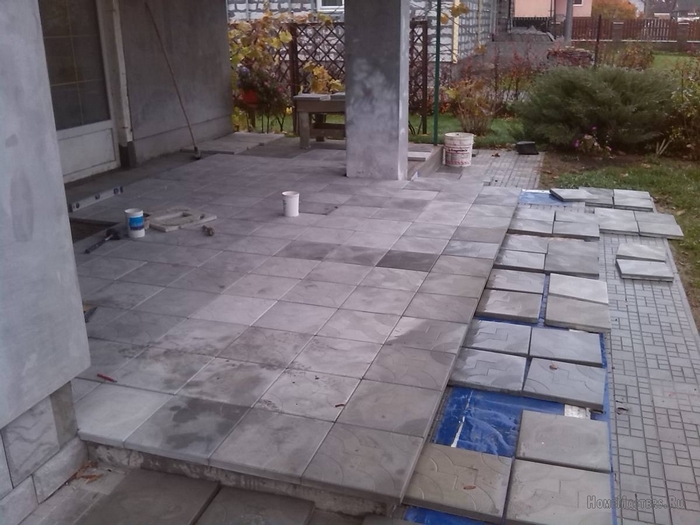
Such a floor covering is more suitable for installation in open areas of a summer house with a canopy. It can be a territory in the garden, and an open terrace near the house, and even a gazebo-canopy in the park. It is better not to lay such materials on the porch.
Is the surface of your terrace completely flat? Almost all synthetic grass models on the market have a latex backing that can fit any type of surface. If your deck has a well leveled flat surface you will be able to get better results, however with a little patience you will get good results even on not perfectly uniform decks.
After looking at all the stores, save the details of the lawn you are interested in and take a look at the prices offered by the chain, where competition is very high. How do you deal with rainwater? During installation, I had a few doubts about rainwater management: if your terrace has a good slope with a classic sewer, you can rest easy!
Modern technologies make it possible to produce concrete slabs imitating paving stones, bricks, natural cobblestones, etc. Such a coating is mounted exclusively on cement mortar or on a sand screed.
To the benefits concrete slabs include:
- Strength and durability;
- Ease of installation;
- Ease of care;
- Maintainability (if necessary, you can simply replace a plate that has been damaged over time).
The disadvantages include uncontrolled subsidence of slabs as a result of non-compliance with the technology of laying the coating in the country.
The bottom of synthetic turf has special openings that allow rainwater to run off, following the normal path to the main drainage channel. If the deck is having stagnation problems, then you will need to create a thin layer of fine gravel under the turf. IN otherwise you won't have to do anything to deal with the rainwater because it will be exactly the same as it was before the synthetic turf was installed.
How to fix synthetic turf on the floor? Do I need to use glue? If you really want to use glue, you can use these semi-permanent or removable ones, otherwise, in my opinion, on the terrace of the house, the use of glue is completely unsuitable. You just need to make a stable fix by inserting the weights. If there is no perimeter wall, but your deck has open railings, you need to protect your lawn from the wind. In order to prevent the wind from lifting the synthetic turf, according to the fragile parts, you can fix the synthetic turf with a highly elastic double-sided tape.
Natural solid wood board

This flooring is ideal for closed areas of a summer residence or a private house. However, if the boards are made of solid teak or larch, then they can also be used on open terraces, verandas, attics, and gazebos. In addition, if the house is made entirely of wood, then you can equip the porch from such material.
Solid wood floor
Be sure to thoroughly clean the laying surface, otherwise the adhesive tape will not be effective. If you are in a windy area or have a perimeter wall, you can use simple weights like flower pots or sandbags. The most difficult step in laying synthetic turf is cutting. Make sure you buy high performance scissors that don't narrow the base that connects to the latex bottom with artificial grass. Take good care and don't make dangerous cuts.
Reliable and durable floors on the open veranda will provide a beautiful look to your home for a long time and save the owners from constantly updating the coatings and spending money on it. Experience shows that the cost of a more expensive floor often pays off. However, it is important to remember that in addition to the quality of materials, compliance with the technology and the accuracy of the work are important.
If you liked this article, you may. Floor tiles have long surpassed indoor applications and are now the preferred and most commonly used flooring for outdoor balconies and terraces. The reasons for this are, on the one hand, the good qualities of the tiles: high frost and wear resistance, extremely varied color and surface structure. On the other hand, there are modern and high-quality materials for tiles: for the preparation of the base, adhesives, grouts and sealing materials.
As a result, tile flooring is easy to use, weather resistant and offers wide opportunities for decorative molding. Open terraces are much heavier than an internal corridor, kitchen or even a bathroom. The most important problems are associated with the inevitable expansion of the tile, the layer of adhesive under it, etc. To reinforced concrete slab when the sun melts. At night, the entire multilayer system cools and collapses. In winter, the reduction of the pavement is even greater. The problem is exacerbated by the fact that the entire multilayer structure, which also contains heat-insulating and waterproofing layers, undergoes thermal expansion and contraction.
Foundation types
There are two types of foundations that are suitable for building a veranda - tape and pile.
Traditionally, the foundation for the veranda is the same as the supporting part of the main building. This practice is widespread and virtually has no complaints. At the same time, differences are allowed, especially in cases where a light veranda is not built at the stage of the main construction, but is added later. In such cases, the house standing on strip foundation, maybe a veranda on a pile foundation.
Features of the open veranda
When choosing what to make the floor on the veranda with your own hands or with the help of hired workers, it should be borne in mind that the operating conditions of the coating will not actually differ from the outdoor space. The presence of a roof and fences do not protect the surface from temperature changes, precipitation and exposure to sunlight. Accordingly, the materials should also be immune or slightly susceptible to such factors.
There are also distinctive features in operation, due to the location and design features of the veranda. So, unlike balconies, they always enter the veranda in the shoes they wear on the street. Sharp heels, hard heels are an additional risk factor and require the selection and use of the most durable materials as flooring.
The photo shows an example of an open veranda
Before painting the floor on an open veranda, if it is made of wood, it is important to know that some additional nuances will also affect its durability.
- So that the floors do not collapse under the influence of microflora (do not rot from dampness, to put it simply), you can use special impregnations. When using conventional boards as a preparation, drying is rarely used. For this kind of construction, it is customary to use material with natural moisture. Those who are not constrained in funds may prefer a decking floor for a veranda made of decking boards - the material is expensive, but has a greater durability compared to conventional boards. In addition, the terrace board is more convenient during installation.
- The likelihood of putrefactive processes is minimized with proper installation of the coating. So, if the size of the gaps does not exceed 3-5 mm, it will be sufficient to compensate for natural expansion during temperature changes, but too small to allow moisture to seep in and go down, and it is precisely its presence that provokes premature destruction of the coating.
Preparatory work before painting the floor
Experts say that when equipping the floors on the veranda with their own hands, close attention should be paid to the preparatory work. The high quality of their performance is an indispensable condition for the durability of the coating and 75% success. On the contrary, poor surface preparation can cause rapid destruction, regardless of how to cover the floor on the veranda.

Please note: The floor on the outdoor terrace must be waterproofed and drained. The latter easily replaces a slight slope of the surface in the direction from the house.
Painting a wooden floor
Painted wood floors can also be classified as classic options. It is believed that in open space conditions such a coating will be short-lived, however, the correct application of a well-chosen paint can extend its service life to 3 years or more.
- Choose moisture-resistant formulations for application. Well proven, for example, acrylic compositions for outdoor use.
- A good alternative to paint can be a special terrace oil.
- Preserve color and texture natural wood allows varnishing. To improve the properties of the material and obtain a more interesting color, you can use a stain before applying the varnish.
- If you are painting new boards, blend the first coat well.
- When applying the first coat, you can use rollers to apply in the middle and thin brushes to cover hard-to-reach areas.
- Several thin layers will be more reliable and durable than one with a large thickness. The best option- three thin layers, each of which is applied after the previous one has completely dried.
- The first layer on new boards is dried for at least 4-5 days.
- After the last layer has dried, the floors are washed with hot water.
Floor coverings on the open veranda
Each material suitable for flooring on an open veranda has its own characteristics. Therefore, it is necessary to decide how to cover the floor on the veranda, taking into account the totality of characteristics, comparing the pros and cons of the materials.
Tile
Tile is considered a "cold" material. Indeed, it is unpleasant to walk on such a coating barefoot and in slippers with thin soles. If you plan to be on the veranda in street shoes, consider laying tiles on the floor - they are durable and moisture resistant, and are not afraid of temperature changes. These qualities are inherent in materials for outdoor work. For safety, make sure that the surface of the cladding was non-slip. If perfect cleanliness is important to you, and you are thinking about how to cover the floor on an open veranda so that it can be washed as often as you like, tiles will also be a rational solution. It is resistant not only to humidity, but also to chemical attack, for example, active elements of detergents.
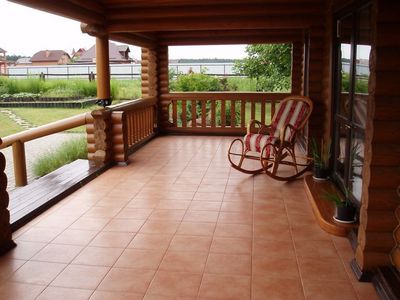
By choosing porcelain stoneware instead of ordinary tiles, you will spend a little more, but you will get best quality. Porcelain stoneware is more durable and has no pores, where moisture could get and freeze, destroying the structure, in winter.
Important: Consider the fact that the tile creates a sufficiently large additional load, this can be important when using a pile foundation.
You can learn about what it is from our separate article. This modern flooring material also has a number of advantages.
And about that, read in another article on the site. In it you will find a list suitable materials And helpful tips for work.
We told the page about the features of energy-saving double-glazed windows.
Boards
The plank floor is traditional, but not outdated, but always up-to-date. natural wood best suited for country house and dachas. Most often, coniferous boards are chosen, which are more resistant to moisture than others due to the presence of resinous substances. Quite expensive, but oak boards are also durable, their ability to resist decay is due to the presence of tannins.
Special terrace boards (decking) will require costs that will pay off with the durability of the coating. You can choose solid wood terrace boards that have undergone special processing or composite products that combine the advantages of natural wood and durable and resistant to external factors of various kinds of polymers.
 Terrace board flooring combines beautiful appearance and high reliability.
Terrace board flooring combines beautiful appearance and high reliability. self-leveling floor
Self-leveling floors are not the cheapest, but one of the most durable and reliable options. On sale it is easy to find dry building mixes for similar purposes. To achieve the desired result, it remains only to accurately follow all the instructions for preparing the solution and its use.

rubber floor
Rubber is one of the coating options that deserve special attention. It has all the qualities necessary for use in open spaces. It is unlikely that there will be another material than to cover the floor on the terrace, as light, moisture resistant, practical, durable and non-slip. When choosing the type of material, consider your experience and capabilities. Rubber conglomerate (crumb or granules) require the use of special technologies. It is much easier to purchase coverage by the footage or in the form of modules that are assembled into a solid coverage using convenient locks.
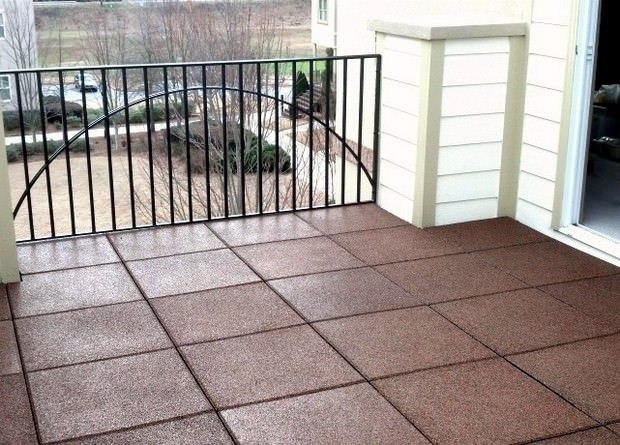
Linoleum
Linoleum - economical option for the veranda. It is beautiful, but has very mediocre performance, and therefore in a few years it will require replacement. When deciding what to make floors on an open-type veranda, choose linoleum only with a budget deficit.




